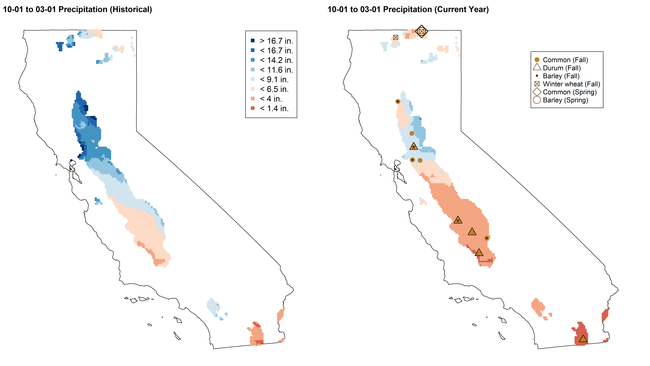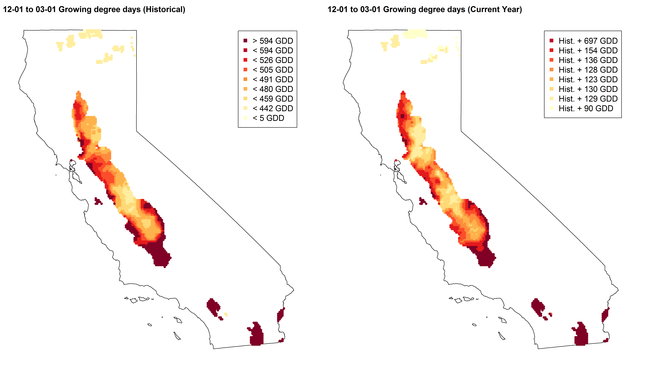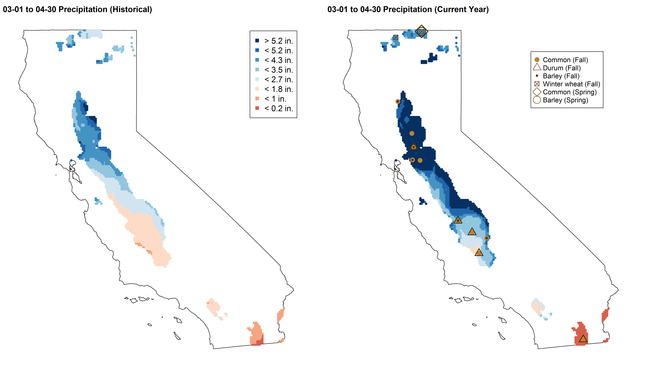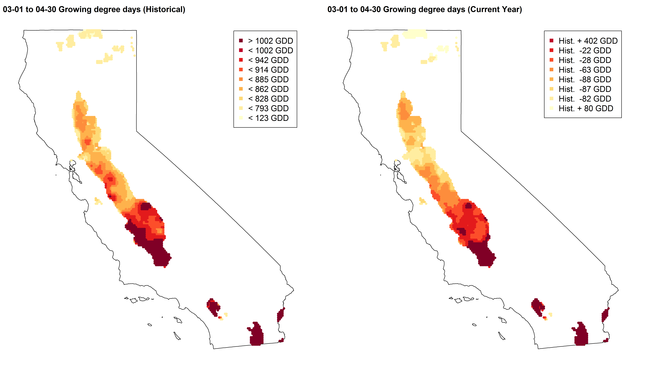With the majority of fall-planted California small grain crops reaching grain ripening stages and annual precipitation mostly finished, let's review 2017-18 seasonal weather patterns across the small grain regions of the state and at the UC small grain testing sites.
The season started out warmer and drier than usual, with infrequent rainfall events from November through February and precipitation totals that were roughly half of historical totals (Figure 1). This was accompanied by warmer than average temperatures over the same period, which resulted in more rapid development of small grain crops during the vegetative period of growth than would be the case in a normal year (Figure 2).
In contrast, March and April were rainier and cooler than normal (Figures 3, 4). This helped bring annual precipitation totals closer to average, although most of the wheat growing regions in the state still received below-average precipitation for the season. Also, the rate of crop development slowed during the late-vegetative and early reproductive stages of growth, with growing degree days (GDD) for wheat accumulating more slowly than average during this period for most of the wheat growing regions of the state.
Patterns of precipitation and rates of development compared to a 10-year historical average at the UC Small Grain Trial locations are provided at the links below.
Tehama (rainfed): Precipitation | GDD
Colusa: Precipitation | GDD
Davis: Precipitation | GDD
Solano (rainfed): Precipitation | GDD
Delta: Precipitation | GDD
Fresno: Precipitation | GDD
Kings: Precipitation | GDD
Tulare (rainfed): Precipitation | GDD
Kern: Precipitation | GDD
Imperial: Precipitation | GDD
The combination of dry, warm temperatures early in the season had the most negative impact at the dryland sites in Tehama, Solano and Tulare counties. The crops at these sites had poor vegetative growth, significant weed competition and varying degrees of drought stress, including some crop failure at the Tulare location. There were also freezing temperatures for several stretches of days from mid-February to early-March in many small grain growing areas, and frost damage was observed at locations in the Sacramento and San Joaquin Valleys.
Disease incidence throughout the state has been relatively limited to date, with some isolated cases of crown and root rot. Stripe rust infection has only recently been observed in susceptible varieties in the UC trial network. We have also observed barley yellow dwarf virus within the UC trials.
Best of luck on the remainder of the season, and we hope to see some of you at the Small Grains and Alfalfa/Forages Field Day in Davis on May 17th.



